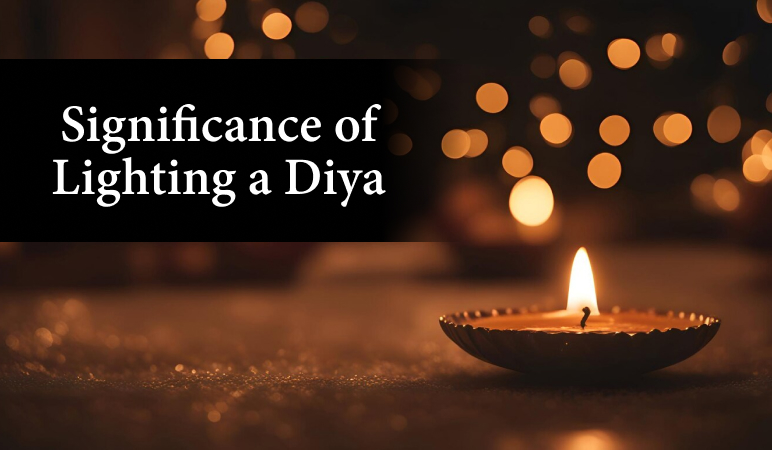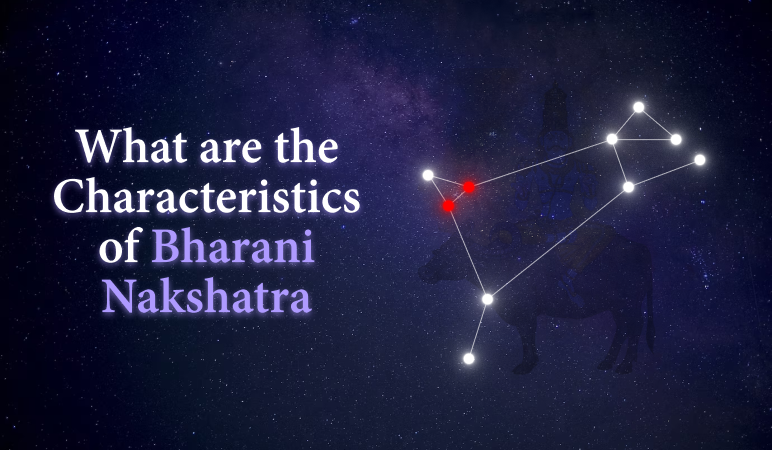What is the Significance of Lighting a Diya in Hindu Culture?

Lighting a diya, deep or jyot (lamp) in front of deities or on the Tulsi Mancha is a universal tradition you will see in almost every Sanatan Hindu household. Some people even visit temples almost every day to attend the Aarti and participate in the lighting of a diya. What is the significance of lighting a diya while performing dharmic or spiritual rituals? Some light diya twice a day, some once in the morning or evening, and some light Akhandjyot (infinite light that burns continuously). It is a common practice in every devout Sanatan Hindu household, even if it is once a day.
The significance of light is prominent in Hindu culture and tradition. It is deeply rooted in us and most of us do it just because we have seen our elders do it without actually knowing the purpose of lighting a diya, and it has been in our practice for generations.
Significance of Light in Hindu Culture
A shloka from Brihadaranyaka Upanishad says,
ॐ असतो मा सद्गमय ।
तमसो मा ज्योतिर्गमय ।
मृत्योर्मा अमृतं गमय ।
ॐ शान्तिः शान्तिः शान्तिः ॥
Om Asato Maa Sad-Gamaya |
Tamaso Maa Jyotir-Gamaya |
Mrtyor-Maa Amrtam Gamaya |
Om Shaantih Shaantih Shaantih ||
Meaning:
1: Om, (O Lord), from (the phenomenal world of) unreality, lead me towards the reality (of the eternal self).
2: From the Darkness (of Ignorance), lead me towards the Light (of Spiritual Knowledge).
3: From (the World of) Mortality (of Material Attachment), lead me towards the World of Immortality (of Self-Realisation).
4: Om, Peace, Peace, Peace.
The second line here, “तमसो मा ज्योतिर्गमय” means “from the darkness (of ignorance), make me go (or lead me) towards the light (of spiritual knowledge).” Here, physical light means the knowledge of illumination. The primary meaning is “remove the darkness and confusion due to ignorance and bless me with knowledge. There is no greater wealth than knowledge, as the more you give it to others, the more you get illuminated with wisdom and knowledge.”
Lighting diya is a part of Hindu culture: Learn here: Why is Performing Aarti Daily Beneficial in Hindu Culture?
Lighting a Diya is Evoking the Power of Agni
In the Vedic Age, Agni was the most revered deva in their verses. Agni is not only a physical entity but also one of the most essential elements of universal needs and it is the lord of divine aspirations.
When we talk about physical lights, it does not mean electric lights. Though electric lights have become normal these days during Deepawali and other festivals and events, they do not hold the same significance as earth lamps or traditional diyas. Even candles do not hold the same significance as diyas. Electric lights illuminate the space but they do not have the same dharmic or aadhyatmic connection as traditional diyas. When we light diyas, jyots or deeps, we use either ghee/clarified butter, mustard oil or sesame oil. We use a cotton wick and soak it in the oil to make it ready for lighting. This lighting has significance as it helps bring positive energy and ward off negative energy from your space.
What Does the Burning of Oil and Wick Signify?
Now the oil in the lamp symbolises our karma. It is a beneficial remedy that helps us balance our energies.
- On Saturdays, lighting a sesame oil lamp with the purpose of appeasing the planet Saturn is a common practice in many Hindu households and mandirs.
- Burning ghee or clarified butter in the lamp symbolises the Vasanas, the desires that are housed within our minds and egos. It helps in balancing our minds by burning our Vasanas (desires).
The wick (the thread/cotton that burns) in the land symbolises the self-ego. When you light the lamp with a purpose, it signifies the gradual burning of the desires and the karma tied to the self-ego. When the oil burns, it eventually exhausts, and with it, the self-ego also disappears when the wick is fully burned and consumed. The fire in the diya symbolises the burning and elimination of negative thoughts. The flame of the diya or deepak, always moves upwards. It is a gentle reminder to always rise above karma, desires and ego. Kundalini herself is fire, and she must ascend. When one’s soul is fully illuminated with self-awareness, one realises Parabrahma and connects to the divinity spiritually.
Light a Diya is Like Evoking the Agni
Reciting a mantra while you light your deep or diya can further help you evoke the Agni, as every sound you make while reciting these mantras in Sanskrit (which is also known as Dev Bhasa or eternal language) connects you to your internal chakras. So, chanting the below mantras while lighting deep has a deep significance for the eternal connection between God and humans.
You can recite any of the following mantras:
The Gayatri mantra,
ॐ भूः भुवः स्वः । ॐ तत्सवितुर्वरेण्यम । भर्गो देवस्य धीमहि। धियो यो नः प्रचोदयात॥ ॐ
Om Bhuh Bhuvah Swahah, Om tat savitur varenyam, bhargo devasya dhimahi, dhiyo yo nah prachodayat Om.
- Aum – Parabrahma ( the Supreme Power of)
- Bhu – Earth
- Bhuvah – universe
- Svah – Heaven
- Tat – Paramatma or God
- Savituh – Creator
- Varenyam – Revered, the one who illuminates
- Bhargo – the remover of sins; the pure science form
- Devasya – God’s form of knowledge (of God)
- Dhimahi – We meditate on god
- Dhiyo – who provides us with Wisdom
- Yoh – which
- Nah – lead us
- Prachodayat – from darkness to light in life.
ॐ दीपज्योतिः परंब्रह्म दीपज्योतिर्जनार्दनः। दीपो हरतु मे पापं संध्यादीपः नमोस्तु ते॥ ॐ
Om Deepajyoti parabrahma, Deepajyoti janardana, Deepo haratu may papam, Sandhyadeepa namostute, Om!
- Om is the ultimate reality.
- Deepjyoti is the brightness of the lamp, the eye of illumination, intelligence, lightning seen at the third eye, life, fire, metre of prosody, time, the light which precedes self-realisation, etc
- Parabrahma is the unknowable reality that cannot be described in the language of the created worlds. The ‘beyond intelligence’.
- Janardana is the energy that excites, causes movement and changes other energies. i.e., it brings about the creation, maintenance and destruction of the created.
- Haratu is to request to take away, remove, carry, wear, or destroy
- May is, of me, for me
- Papam means inauspiciousness. (There is only one form of genuine auspiciousness, ie Self-realisation. There is only one form of non-auspiciousness, ie Self-Delusion.)
- Sandhyadeep is the internal illumination that you see in your third eye in deep Dhyan.
The lamp is alternatively lit at dawn and dusk. Sandhya is the junction where reality and the unreal meet.
The Agni Gayatri Mantra
ॐ सप्तजिव्हाय विद्महे हव्य भद्राय | धीमहि तन्नो अग्निः प्रचोदयात || ॐ
Om Sapta jivhaya vidmahe, havya bhadraya dhimahi tanno Agnih prachodayat Om
ॐ महाज्वालाय विद्महे अग्निदेवाय धीमहि। तन्नो अग्नि: प्रचोदयात्।
Om Maha Jwalaya Vidhmahe Agni Devaya Dheemahe Tanno Agni Prachodayath.
अर्थ :
ओम। मैं महान ज्योति की ओर अपना ध्यान केंद्रित कर रहा हूं, ओह! अग्नि देवता मुझे बुद्धि प्रदान करें, हे अग्नि देव! अग्नि के तेजस्वी देव कृपा मेरे मन को अपने प्रकाश से रोशन करें।
Meaning:
Om, Let me meditate on the great flame, Oh, God of fire, give me higher intellect, And let the Fire God illuminate my mind.
Or finally,
ॐ शुभं करोतु कल्याणं | आरोग्यं धन संपदा | शत्रुबुद्धिः विनाशाय | दीपः ज्योतिः नमोस्तुते || ॐ
Om Shubham Karoti Kalyanam, Arogyam Dhana Sampada, Shatrubuddhi Vinashaya Deepajyoti Namostute Om
- Shubham – eternal auspiciousness, Parabrahma
- Karoti – does, is
- Kalyanam – fortune, benevolence, virtue, generosity, beauty, happiness, gold, self-realisation
- Arogyam – health, freedom from diseases, removal of afflictions. In the spiritual sense, there is only one disease/affliction, ie self-delusion
- Dhana – gift, wealth, valued object. There is only one such thing, ie self-realisation
- Sampada – to make complete
- Shatru-buddhi – Shatru is a hostile enemy. Buddhi is the tattva in which the desires (Vasana) reside. These Vasana are normally hostile and inimical to self-realisation. If you can destroy their hostility, you can get this Buddhi to work with you for self-realisation.
- Vinashaya – to destroy or utterly annihilate. The inimical tendency of the Buddhi is annihilated, not Buddhi itself!
- Deep-jyoti – conscious energy of Agni, Ajnya chakra
- Namostute (namah astu te) – That infinite. That paradox of illusion and wisdom united together. That depth of stillness and ease of flowing movement together. That eternal, unborn one in solitude. May that be there!
Lastly, if you find it challenging to remember these mantras, simply recite “Om” three times while lighting your lamp.
Evoking the power of Agni
The recitation of any of the above mantras to evoke Agni means you are awakening all the forces and energies that exist within you. As per Sanatan Hindu Dharma, this evoking will create the infinite power of Agni, which can be used to transform your inner and outer flow of energy!
In Sanatan Hindu dharma, the lighting of the deep or diya, is considered highly auspicious, and is believed to bring peace and prosperity in life. When you light a diya, you focus on the process of lighting for a minimum of 10 seconds. This intense focus on one particular activity brings self-illumination in spiritual terms. Moreover, when you light the diya, you also light knowledge within yourself. The Agni/fire is called the Jata-veda, meaning the ‘one who knows everything’.
In Sanatan Samaskriti and Parampara, Agni itself is part of the Panchbhutas (apart from Jal, Vayu, Akash and Prithvi) that make up this entire universe and everything that forms it, including human beings.
How do you light a diya?
So, now the question is, which oil to use to light a diya or deep? It could be ghee, sesame or mustard oil. In some rituals, people also use neem oil, mahua oil, coconut oil and castor oil. Never use ‘refined’ oil, as it is not pure oil but rather produced from various products. Take white cotton to make the wick. For Devi pujas, use a little turmeric to make the wick a little yellowish before lighting. Make sure you are using 2 wicks and never use one. Make them one by twisting. Your diya or deep must face in an east direction. Keep the lamp (either made of stone or brass/bronze) on a copper metal plate (no steel/ iron plate). Also, below the copper plate, keep a few grains of uncooked rice.
Every traditional practice in Sanatan Hindu dharma has a deep cosmic connection. You need to practise it and experience it to understand it properly. So if you do not light a diya, have stopped lighting it or think it is an orthodox practice that is not required in today’s life as we have so many innovative lighting solutions, then we will suggest you try it once and experience the awakening of energy within yourself.









